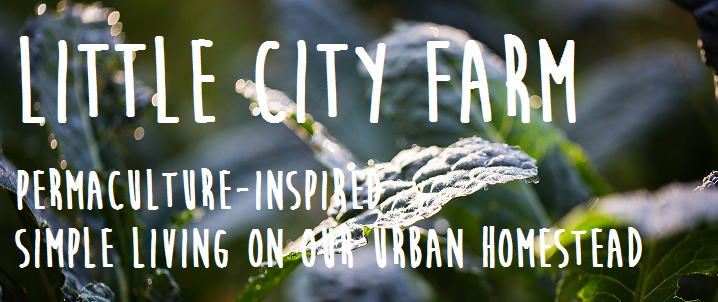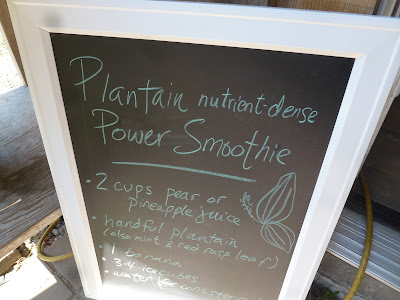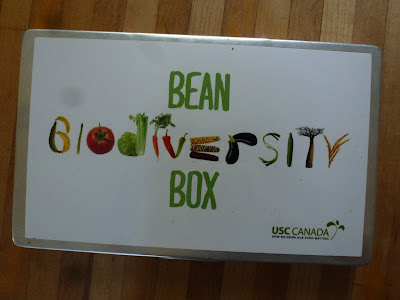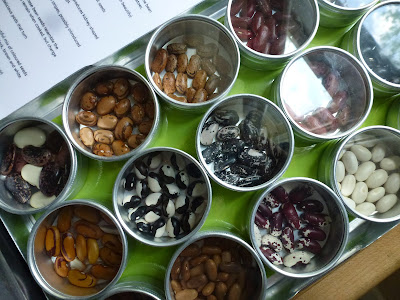End of June, and the mulberries are ripe. It seems there was a nice trend to plant mulberries and service berries in public areas around our town as edible landscaping some years ago, and we are now reaping the benefits. There seem to be ripe mulberry or service berry trees on nearly every street, often the service berries are lining the boulevard all the way along.
Tips for harvesting:
The mulberry trees are generally easy to spot - distinctive lobed leaves, and the tell-tale signs of a blue-stained sidewalk or roadway below. These trees can be quite tall, so picking by ladder might be in order to get the most benefit. It's often easiest to gather the berries that have fallen to the ground, or climb the lower tree limbs and shake the branches to drop berries below onto a waiting ground sheet.
Why are mulberries a superfood?
Mulberries are one of our amazing nutrient-dense local superfoods. They are full of antioxidants, high levels of vitamins (A, C, E, K), iron, protein and fibre, and also help boost the immune system. They have been found to regulate the blood sugar, and also help cleanse the blood and detoxify the body by stimulating the liver. They are all around wonderful, tasty, and easily harvestable locally (for free!) if you take a bit of time to find them.
How to use:
We love freezing mulberries for winter smoothies, but also eat them fresh in our granola, or by the handful as we pick them. They make a wonderful pie, jam and jelly as well. Mulberries, when dried, are perfect for trailmixes or eating as a snack on the go.
Wednesday, June 29, 2016
Saturday, June 25, 2016
Plant communication & plant spirit healing workshop - reconnecting with nature
We had local herbalist and plant spirit healing practitioner, Heather Cain here to lead a workshop on Plant Communication. She invited us to enter the fascinating world of plant energetics, to take time to listen and tune in to the language of plants (understood with our intuition, our 5 senses and beyond), to see plants as closely related to humans - to understand that humans and plants co-create, we need each other, we have evolved together.
It's interesting to see the surge in mainstream culture with "earthing" (grounding ourselves literally), barefoot parks like this one for therapeutic value, barefoot running, forest schools and forest kindergartens, forest-bathing (the practice of simply breathing and being in the forest for meditation), and concepts like Nature Deficit Disorder (a phrase coined more than 10 years ago, and now commonly understood - simply the idea of being disconnected from nature and the ill effects that brings to our bodies, minds, health, spirits). There is obviously a need to reconnect with the natural world, we see and feel the healing benefits from spending time in the woods, with soil, with plants.
Heather will be back to lead a workshop in July on making and using flower essences, and a herbal root-based workshop in the fall. See workshop descriptions here.
It's interesting to see the surge in mainstream culture with "earthing" (grounding ourselves literally), barefoot parks like this one for therapeutic value, barefoot running, forest schools and forest kindergartens, forest-bathing (the practice of simply breathing and being in the forest for meditation), and concepts like Nature Deficit Disorder (a phrase coined more than 10 years ago, and now commonly understood - simply the idea of being disconnected from nature and the ill effects that brings to our bodies, minds, health, spirits). There is obviously a need to reconnect with the natural world, we see and feel the healing benefits from spending time in the woods, with soil, with plants.
Heather will be back to lead a workshop in July on making and using flower essences, and a herbal root-based workshop in the fall. See workshop descriptions here.
Practical Herbalist series - session 1
The first of this season's 4-part Practical Herbalist workshop series brought 14 eager participants to us today. Over the course of 4 months (June-Sept) we are meeting one Saturday morning per month as a group.
The goals are to provide hands-on practical experience in herbal medicine making, including harvesting and using leaves, berries, flowers, roots, bark, seeds (each as they come into their prime in the Little City Farm garden); wild-harvesting plants with the emphasis on local nutrient-dense "superfood" wild plants to be used as both food and medicine; and also helping each participant to develop a deeper relationship to medicinal plants while learning in the simpler tradition (i.e. building a relationship with plants that is hands-on, locally focused, creating simple remedies made by hand together).
There is "homework" to be done each month between get-togethers, so that participants have the chance to practice what was talked about during the session; and also herb journals/or herbariums to work on - we will be covering 22 locally available plants so the hope is that each participant will have a good working knowledge of how to best prepare these plants for use, and how to use safely and effectively in their home for first aid and general minor ailments.
It's a lot to pack into four short sessions, but with the month time between each workshop the participants can work as extensively as they are interested or able, to further their knowledge as we go along. My role is facilitator and guide, helping as they develop their own personal path for herbalism. I feel very fortunate to have the opportunity to work with such a wonderful and interesting group of participants in this way over the summer.
Today we worked with peppermint, lemon balm, nettle, red raspberry leaf, and plantain (Plantago major)- harvesting and processing these plants to make a plantain solar-infused oil; and a solar-infused sun tea (equal parts nettle, red rasp leaf, peppermint and lemon balm). We also made a delicious nutrient-dense green smoothie with plantain, mint and lemon balm. I especially love using locally wild-harvested herbs as food, (i.e. free "food as medicine"). Plantain is high in B vitamins, protein, Vit C and Vit K, and fatty acids.
Plantain Nutrient-Dense Green Smoothie
(adapted from a recipe by Rosemary Gladstar)
You will need:
2 cups pineapple or pear juice, organic and/or fresh
1 large handfuls of fresh plantain leaves *
small handful fresh peppermint leaves (a few sprigs)
small handful fresh lemon balm leaves (a few sprigs)
1 banana
3-4 icecubes
water to adjust consistency
* fresh plantain can be interchanged with other fresh nutrient-rich herbs like red clover, or red raspberry leaf
Method:
1) Blend everything in a blender until smooth. Stir to mix in the foam which will form on top (delicious!).
2) Drink iced, immediately.
3) Very refreshing on a hot day!
4) Serves 6-8 people.
The goals are to provide hands-on practical experience in herbal medicine making, including harvesting and using leaves, berries, flowers, roots, bark, seeds (each as they come into their prime in the Little City Farm garden); wild-harvesting plants with the emphasis on local nutrient-dense "superfood" wild plants to be used as both food and medicine; and also helping each participant to develop a deeper relationship to medicinal plants while learning in the simpler tradition (i.e. building a relationship with plants that is hands-on, locally focused, creating simple remedies made by hand together).
There is "homework" to be done each month between get-togethers, so that participants have the chance to practice what was talked about during the session; and also herb journals/or herbariums to work on - we will be covering 22 locally available plants so the hope is that each participant will have a good working knowledge of how to best prepare these plants for use, and how to use safely and effectively in their home for first aid and general minor ailments.
It's a lot to pack into four short sessions, but with the month time between each workshop the participants can work as extensively as they are interested or able, to further their knowledge as we go along. My role is facilitator and guide, helping as they develop their own personal path for herbalism. I feel very fortunate to have the opportunity to work with such a wonderful and interesting group of participants in this way over the summer.
Today we worked with peppermint, lemon balm, nettle, red raspberry leaf, and plantain (Plantago major)- harvesting and processing these plants to make a plantain solar-infused oil; and a solar-infused sun tea (equal parts nettle, red rasp leaf, peppermint and lemon balm). We also made a delicious nutrient-dense green smoothie with plantain, mint and lemon balm. I especially love using locally wild-harvested herbs as food, (i.e. free "food as medicine"). Plantain is high in B vitamins, protein, Vit C and Vit K, and fatty acids.
Plantain Nutrient-Dense Green Smoothie
(adapted from a recipe by Rosemary Gladstar)
You will need:
2 cups pineapple or pear juice, organic and/or fresh
1 large handfuls of fresh plantain leaves *
small handful fresh peppermint leaves (a few sprigs)
small handful fresh lemon balm leaves (a few sprigs)
1 banana
3-4 icecubes
water to adjust consistency
* fresh plantain can be interchanged with other fresh nutrient-rich herbs like red clover, or red raspberry leaf
Method:
1) Blend everything in a blender until smooth. Stir to mix in the foam which will form on top (delicious!).
2) Drink iced, immediately.
3) Very refreshing on a hot day!
4) Serves 6-8 people.
Tuesday, June 14, 2016
Petals & Roots - Kids Herbal Club finale
We had four great weeks with a group of kids here, exploring the world of herbs, herbal remedy making, and harvesting wild foods as part of our first Petals & Roots Kids Herbal Club. During this series the kids learned about safely identifying herbs (by using our senses, stalk shape, leaf pattern, flower, etc), how to carefully and respectfully harvest herbs, and how to store and dry them, how to incorporate wild herbs into our meals, and how to make a few basic remedies.
We packed the days with hands-on activities, including harvesting the particular plants we were talking about. We made green smoothies with dandelion, cold frescas with mint, steeped sun tea with lemon balm, sketched plants in our journals, transplanted herbs into pots to take home, had a herbal scavenger hunt, built simple plant presses that fit in a backpack, and made an all purpose healing salve with plantain. Hopefully this series sparked a continuing interest in the wonderful green world for these kids, an understanding that these wise and useful plants are all around us and we simply need to pay attention, learn and practice. It was amazing how simply sitting with the plants (while sketching, or harvesting) was a special part of each week. We don't slow down and do that often enough.
Here are a few photos of the creations from our last day together - edible flower cupcakes, topped with an assortment of edible herbs and flowers from the Little City Farm garden (we did a little tour around the garden and found 20 types flowers that were ready for eating today, including: dandelion, sage, lavender, chive, calendula, marigold, thyme, kale, fennel, clover, violets, heartsease, and rose petals!). What a lot of beautiful creations (and adventurous eaters!), and a nice reminder of the vibrancy, joy and colour that herbs can bring to our life through our food (food as medicine).
We hope to offer this Petals & Roots Kids herbal series again in the fall, focusing on herbal roots, seed saving, and other fall-related herbal projects.
We packed the days with hands-on activities, including harvesting the particular plants we were talking about. We made green smoothies with dandelion, cold frescas with mint, steeped sun tea with lemon balm, sketched plants in our journals, transplanted herbs into pots to take home, had a herbal scavenger hunt, built simple plant presses that fit in a backpack, and made an all purpose healing salve with plantain. Hopefully this series sparked a continuing interest in the wonderful green world for these kids, an understanding that these wise and useful plants are all around us and we simply need to pay attention, learn and practice. It was amazing how simply sitting with the plants (while sketching, or harvesting) was a special part of each week. We don't slow down and do that often enough.
Here are a few photos of the creations from our last day together - edible flower cupcakes, topped with an assortment of edible herbs and flowers from the Little City Farm garden (we did a little tour around the garden and found 20 types flowers that were ready for eating today, including: dandelion, sage, lavender, chive, calendula, marigold, thyme, kale, fennel, clover, violets, heartsease, and rose petals!). What a lot of beautiful creations (and adventurous eaters!), and a nice reminder of the vibrancy, joy and colour that herbs can bring to our life through our food (food as medicine).
We hope to offer this Petals & Roots Kids herbal series again in the fall, focusing on herbal roots, seed saving, and other fall-related herbal projects.
Friday, June 10, 2016
Infused water - easiest herbal summer drink!
Our new favourite drink, infused water! So simple, so beautiful, so refreshing. Perfect for summer drinks, to share at your next potluck dinner or outdoor summer feast.
Simple fill a clear bottle or mason jar with fresh cool filtered water. Add some sliced fruit, a few fresh berries, or sliced cucumbers, top with a few sprigs of herbs and/or edible flowers. Shake very gently. Let infuse for at least 30 min. Then enjoy. Keep in the fridge for up to 3 days.
Combinations we love (use what berries & herbs are in season in your garden):
Simple fill a clear bottle or mason jar with fresh cool filtered water. Add some sliced fruit, a few fresh berries, or sliced cucumbers, top with a few sprigs of herbs and/or edible flowers. Shake very gently. Let infuse for at least 30 min. Then enjoy. Keep in the fridge for up to 3 days.
Combinations we love (use what berries & herbs are in season in your garden):
- grapefruit-mint
- orange-cucumber-mint
- basil-strawberry
- lime-rosemary
- raspberry-rose petal
- blackberry-fennel
- lemon-blueberry
- strawberry-mint
- peach-lavender
Wednesday, June 08, 2016
Preserve - Newest Issue of Taproot Magazine
If you have not yet found Taproot Magazine, it's time to check it out! Focusing on gardening, farming, making, cooking, dreaming, with outstanding artwork, photography, essays and poetry, recipes & lots of DIY projects, this magazine has it all.
Each time a new issue arrives in our mailbox (yes, a real paper copy magazine to read with cup of tea in hand) my 8 year old daughter and I wrestle to see who gets to flip through it first. She looks for the paper dolls, colouring pages, farm animal photography. I admire the artwork, food photography, latest recipes and stories. My husband admits he eventually makes his way through all the articles and stories too (even if it does give him pangs for a larger farm, some day). But the magazine makes us feel connected to a larger community worldwide of those trying to live honest, simple, handmade, heart-filled lives. We feel renewed in our efforts here on our little urban homestead to keep mending, baking, fermenting, unschooling, gardening, wild-harvesting, healing, and so forth - adding new insights and inspiration to what we already do in our day to day life.
In the current issue, check out our article - Homegrown Sprouts! You'll learn how to grow sprouts at home, and get recipes for super sprout salad, and morning greens smoothie, plus learn a little more about how and why we love to sprout.
Each time a new issue arrives in our mailbox (yes, a real paper copy magazine to read with cup of tea in hand) my 8 year old daughter and I wrestle to see who gets to flip through it first. She looks for the paper dolls, colouring pages, farm animal photography. I admire the artwork, food photography, latest recipes and stories. My husband admits he eventually makes his way through all the articles and stories too (even if it does give him pangs for a larger farm, some day). But the magazine makes us feel connected to a larger community worldwide of those trying to live honest, simple, handmade, heart-filled lives. We feel renewed in our efforts here on our little urban homestead to keep mending, baking, fermenting, unschooling, gardening, wild-harvesting, healing, and so forth - adding new insights and inspiration to what we already do in our day to day life.
In the current issue, check out our article - Homegrown Sprouts! You'll learn how to grow sprouts at home, and get recipes for super sprout salad, and morning greens smoothie, plus learn a little more about how and why we love to sprout.
Sunday, June 05, 2016
Radish harvest
Yum! One of the first harvests from seed planted this spring - radishes! Love having loads of veggies that kids can just nibble fresh right out of the garden, with dirt still clinging onto them.
By the way, did you know dirt makes you smarter? Here are some articles that describe why we should be not only eating a little more dirt clinging to our veggies, but also spending time outside with our hands in the soil breathing in fresh air (and soil bacteria). Dirt makes us smarter, happier, healthier...research shows there is beneficial bacteria in the soil that lowers depression, diversifies our gut bacteria to make us healthier and happier.
From This Book Was A Tree, why dirt makes you smarter...
Can dirt make us smarter?
And another article here on why dirt makes us smarter...
By the way, did you know dirt makes you smarter? Here are some articles that describe why we should be not only eating a little more dirt clinging to our veggies, but also spending time outside with our hands in the soil breathing in fresh air (and soil bacteria). Dirt makes us smarter, happier, healthier...research shows there is beneficial bacteria in the soil that lowers depression, diversifies our gut bacteria to make us healthier and happier.
From This Book Was A Tree, why dirt makes you smarter...
Can dirt make us smarter?
And another article here on why dirt makes us smarter...
Bean biodiversity project
We received this great "bean biodiversity" kit in the mail from USC-Canada, a non-profit organization promoting food security and seed saving (not only in Canada, but around the world). They have some amazing projects going on, lots of useful information, and resources for educators (useful for home educators too) including this bean growing kit with 15 kinds of beans (some of which were near extinction and have been revived by seed savers in Canada). Very cool project to take on with our 8 year old daughter! The kit comes with info about each seed, and ways to share the stories of these diverse seeds, so we can all learn why it's so important for us to help grow, save and share the seeds.
Here at home we are planning to plant a few varieties to save this year - I read that beans need an average of 10-20 feet distance between varieties so that they don't risk cross-pollinating. Some growers do grow beans successfully without cross-pollination, but it depends on number and variety of pollinators in the area. We don't have the space to grow all these varieties, but will grow some this year and some next. And did I mention how beautiful these beans are - we especially love the Orca Beans, Sadie's Horse Beans, Tiger's Eye, Annie Jackson Bean, and the Candy Beans. Take a look below!
.
Here at home we are planning to plant a few varieties to save this year - I read that beans need an average of 10-20 feet distance between varieties so that they don't risk cross-pollinating. Some growers do grow beans successfully without cross-pollination, but it depends on number and variety of pollinators in the area. We don't have the space to grow all these varieties, but will grow some this year and some next. And did I mention how beautiful these beans are - we especially love the Orca Beans, Sadie's Horse Beans, Tiger's Eye, Annie Jackson Bean, and the Candy Beans. Take a look below!
.
Subscribe to:
Posts (Atom)

























































